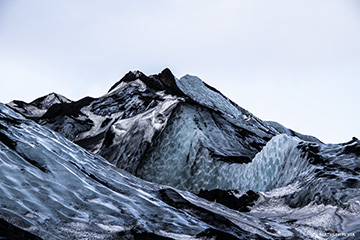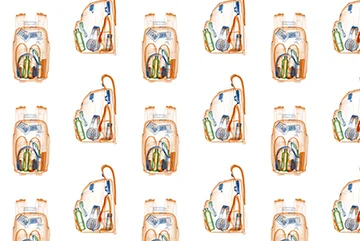UX Through a Lens
Parthhavi Mehta /
I remember the first time I held a camera, it was a simple point-and-shoot classic black Kodak KB10. I was 8 years old and it was back in the day where cameras didn’t have digital screens and zoom lenses yet; where a low-hummed click (owing to the camera’s motorized film advance mechanism) enveloped your surroundings into a precious stilled image. And the charm of this hobby was in the anticipation that follows maximizing the film roll to see the final results.
Photography has been a keen hobby of mine ever since I started pursuing it in my childhood. And over the years, as I studied design and learnt more about user experience (UX) design, I began to understand that though they may seem like vastly different fields, they have a lot more in common than one would think. And little did I know at 8 years old that I was taking the first step on the path to learning UX design the moment I picked up that 36-exposure film-roll camera and started flipping it around. But in today’s digital world and owning a digital SLR, it took me a step back and a full zoom view through an 18-135mm lens to understand this revelation. Who would have thought right? A slight shift in perspective is all that’s required to find that common thread between visuals through a viewfinder and the mapping of a user’s journey. The parallels between photography and UX are undeniable.

While photography comprises of the click of a shutter and UX the click of a button, or while photography refers to frames through a viewfinder whereas UX design refers to frames in Figma files; I realised that the tools used on a daily basis may be different for both but the underlying core philosophies are strikingly similar.
In UX, we’re all about the experience. And coming to think of it, UX is in the littlest of things. The process of a photographer clicking pictures is an experience in itself. The features may be very different in a camera and on an app, but one thing they both focus on is clarity. While in photography image clarity is key, clear navigation in a user’s journey is also of utmost importance.
It’s like saying they’re different chapters of the same book or same sentence, different languages.
Here are the top 8 skills that I learnt through photography over the years that has inadvertently helped me in my design career.
A platform for storytelling

‘All eyes on you’ – Loni Kalbhor, Pune (2017)
Photography and UX, both thrive on the hidden superpower – emotion.
The way a good photograph should be able to tell a story, UX is no different in terms of serving as a medium for the same. Photography taught me to look at the world from different perspectives. And the ability to do that in UX, is what makes good design.
Just the way a photographer can capture a moment in time and make it timeless, in UX we learn to put ourselves in the user’s shoes and understand their pain points, needs and requirements. And with the help of this we form a story. Storytelling techniques in photography can teach us how to create effective and engaging user journeys in UX. Effective designs should be like North stars – they should be able to guide users by making navigation easy for them in order to complete tasks.
From frame to interface

Den Haag Centraal Station
– The Hague, Netherlands (2020)

App interface
A key principle in both photography and UX design is composition. I realised that composition through a lens is not much different from compositions on a screen.
I started experimenting with different placements of elements in photography. The time I learnt the impact this had was when I subconsciously started implementing the same in my designs. The practice of assembling different elements in order to build more balanced and structured compositions during my years of visual design, really helped me understand and work with the different design principles in order to implement them in my designs.
The bird’s-eye view

Golden hour in the ‘Big Apple’ – New York, USA (2021)
Zooming out of a camera helps you see the bigger picture. It makes you take a step back and appreciate not just the subject but rather, the subject within their surroundings. It knits a story behind that photograph which makes a more meaningful image.


This is something that has also translated to my work as a UX designer. Zooming out when working on projects has helped me to avoid getting caught up in small details and losing sight of the larger picture. It has also helped me gain a broader perspective through which I can identify patterns and connections that may not be immediately apparent when focusing on the nuances.
In the ‘Frame’ of mind

The dancing green lights ‘Aurora Borealis’ – Reykjavík, Iceland (2020)
Patience as they say, truly is a virtue.
Be it holding still until you get that sharp shot in wildlife photography, capturing that perfect portrait during the golden hour or being able to capture this shot of the Northern lights in the biting cold of the Icelandic winter. Or taking the time to break down complex flows and build intuitive screens for users in UX.
While photography requires a still and steady hand, UX requires a clear and focused mind.
The end-to-end process that falls across the UX spectrum is extremely iterative as a whole.
And possessing the quality to be patient is what allows individuals to remain focused and committed to their goals, even in the face of setbacks or obstacles. It enables one to stay calm and composed under pressure and persevere through all challenges until the desired outcome is achieved.
Grids are good

‘Glimmering water’ – Brzeźno Beach in Gdańsk, Poland (2016)
One of the most basic fundamentals of photography rest upon the ‘Rule of thirds’. To break down this technical term – it is basically a grid system of 9 equally sized rectangles that acts as a guideline for the photographer to place their subject within the frame, to create balance and interest. It’s something that has helped me click highly contrasting yet well-balanced pictures.
UX lays it foundation upon a very similar technique of ‘rows and columns’. And I learnt that by following the Gestalt laws, one can create not only well-structured and organised but also intriguing and interesting designs. This in turn provides for a hierarchy of information while also maintaining consistency.
Hue to UX

Somewhere in Reykjavík, Iceland (2019)
In both photography and UX, the use of light, shade, and colour can greatly impact the mood and emotion conveyed to the audience or user.
In photography, this can be used to produce a range of effects. It can even create specific moods and emotions – from dramatic and moody to soft and romantic.
Similarly for UX, the choice of colours can influence the user’s emotions and perception – it certainly plays a crucial role in making or breaking a user’s journey. For example, bright and bold colours may create a sense of energy and excitement, while muted tones can convey calmness and sophistication. Or another example could be of some that think dark mode is edgy and slick, while others may beg to differ that light mode is efficient and classic.
Know thy audience

Jhalana National Park – Jaipur, Rajasthan (2023)

A moment in time
– Loni Kalbhor, Pune (2017)
Knowing your audience is a critical aspect of effective communication, whether you’re a photographer or a UX designer. It’s essential to understand the demographics, preferences and needs of your target audience to create content or design solutions that resonate with them.
For a photographer, knowing the audience can help in choosing the right subjects, angles, colours and lighting to create an emotional response from the viewers. For example a wedding photographer would use different props as compared to a sports photographer, or a product photographer would use different techniques as compared to a wildlife photographer; because they have different audiences and evoke different emotions.
Likewise, UX designers must understand their user’s needs to create intuitive and user-friendly designs. For example, if you’re designing an app for a senior age group, you may use larger fonts and simpler graphics to accommodate eyesight and cognitive abilities just as you’d probably use more quirky and playful typography while designing a product for the younger generation. This helps in creating more personalised experiences that connects with them on an emotional level and provides for a greater engagement rate.
Attention to detail

‘Crystal Ice’ – Diamond Beach, Southern Iceland (2019)
Both fields require a high level of attention to detail in order to create a successful output. While photography is about capturing the minutest details that may be missed out by others, UX also teaches us how even smallest of details can have a big impact on the user’s experience.
Photography is all about capturing the perfect shot, which is the same as creating an intuitive interface in UX design to ensure seamless navigation – they’re both delivering the same dialogue just in different languages.
A reflection through the lens
It’s fascinating how two disparate fields like photography and UX design have so much congruence and correlation. Through some experience in both fields over the years, I have learned that good design is about more than just aesthetics. It’s about creating an experience that is not only visually appealing, but also functional and user-centred.
In conclusion, the world of photography is full of inspiration for designers. Principles of photography have provided me with many things to add to my UX toolkit and also a valuable framework for designers at large. It has taught me how to carefully consider every element of a design, from composition and colour to lighting and contrast, in order to create an effective and engaging experience for the end user. Moreover, the process has helped me to approach UX design in a more thoughtful and strategic way. By considering the needs and behaviours of the target audience, I am able to create designs that are tailored to their needs and preferences, that provides a seamless and intuitive experience.
References
- Original cover photo by ‘Marsel Van Oosten’





